by Eric Meier
Let’s face it: wood is a commercial commodity. It’s the foundation of many different industries (construction, furniture, flooring, guitars and musical instruments, etc.). As such, it makes sense to put a product into as positive a light as possible. But sometimes, in an effort to sell the products, lines are crossed—or at the very least, we tread into some decidedly gray areas.
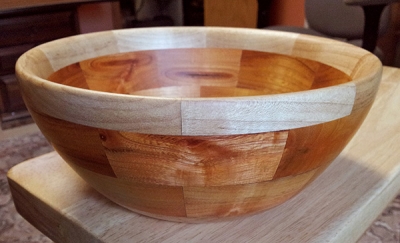
Let’s just make something up…
In a practical sense, the average non-woodworking consumer probably couldn’t tell oak from pine. Wood is wood—or so they think. It seems that many times, even “fake wood” like melamine shelving with wood patterns printed on them, people don’t know what they are looking at. (Which is why I list, as the very first step in wood ID, confirm that it is actually solid wood.) This shroud of ignorance is precisely one of the things that this website was created to dispel.
In the absence of reliable knowledge, it’s left up to marketers and salespeople to fill in this gap with… suggestions. Some of these suggestions can be helpful, others can be confusing, while others can be downright misleading. While science has a defined way of describing precisely what tree is being referenced down to the genus and species (and sometimes subspecies), it’s literally in Latin—not the most consumer-friendly choice!
But common names? They’re just sort of made up. No, really. Just about every tree and wood name on the market, at some point in history, began with someone looking at it, considering it, and just giving it a name. The given name then slowly sank into culture and was ingrained without second thought. Ideally, this naming is done locally, in the native language where the tree itself occurs. But the problem arises when that common name is confusing or unhelpful to outsiders. Marketers might call this “brand recognition.” Some new or exotic woods have very poor brand recognition.
Good authentic names: few and far between
Sometimes, pre-existing local names end up being very successful. One great example is bubinga (originating from equatorial Africa). It’s a great wood with a great name. But is bubinga’s success based solely on its beauty and characteristics? Personally, I don’t think that’s the only reason. I don’t think it’s a coincidence that the name is easy to pronounce and fun for people to say.
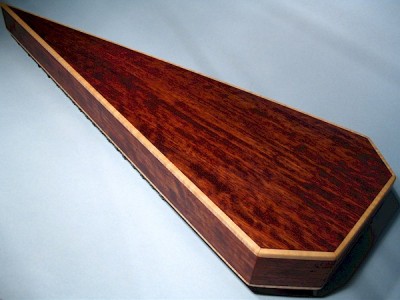
For those that balk at my bubinga assertion, consider this: there are other closely related-species in the same genus as bubinga (Guibourtia), and a lot of them have very similar appearance and working characteristics. But none of them are remotely as popular as bubinga. Consider G. arnoldiana, which goes by the name mutenye (or benge). Or the slightly more popular G. ehie, which goes by a host of names, such as ovangkol, amazique, mozambique, and shedua. You can almost sense the desperation just from all the alternate names given to the wood. It was almost as if those in the industry knew they had something of value, but they just couldn’t get the general buying public to bite. (I believe this same phenomenon happened with Machaerium species from South America—a great hardwood that’s been sold under a plethora of common names, like pau ferro, morado, Bolivian rosewood, and santos rosewood.)
CITES note: In recent years, Bubinga has become a CITES-listed species, so we may be seeing much less of this wood in the future. Note to future self: bubinga was a very popular and well-known imported hardwood.
When regional names go wrong
I would place failed regional common names into two categories:
- hard to pronounce, or
- negative connotations
The first is probably the most widespread. One of the best (or worst?) examples of this is a wood which usually goes by the name macacauba. The name looks confusing, is hard to naturally pronounce, and just sounds… ugly. I know that last comment about ugliness is a bit subjective, but it’s an undeniable part of human nature. We do judge books by their covers, and we also judge woods by their names.
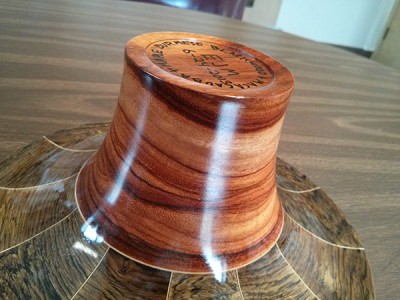
One notable exception to this principle are the trees of the Handroanthus genus (formerly placed in the genus Tabebuia) known as ipe, a popular decking and hardwood flooring material. It’s hard to pronounce, one might naturally think the name ipe rhymes with pipe, but the name is actually two syllables, pronounced EE-pay. It’s no secret that ipe is also sold under its more sales-friendly (though, in my opinion, quite shady) name of Brazilian walnut.
But I don’t think that ipe’s long term success as a commercial import can be attributed to a clever naming scheme. Rather, in its given use-cases, it’s simply an excellent wood (sustainability concerns aside). It’s very strong, exceptionally durable in outdoor conditions, and it doesn’t hurt that it’s a dark reddish brown color that many people love.
The Brazilian walnut name may have helped make some short-term sales to the uninitiated new homeowner looking for a new custom deck, but it didn’t really build long term brand recognition the way that the ipe name has. In this regard, trying to initially piggyback on top of walnut’s familiarity (true walnut is from the Juglans genus) I believe has actually done ipe a great disservice. The name ipe is almost like a codeword used by those “in the know,” giving it a truly unique position that, in many cases, is well deserved.
Hypothetical Homeowner’s conversation, Brazilian walnut vs ipe
Sold under the name Brazilian walnut
GUEST: I love your new deck, what is this stuff?
HOMEOWNER: Thanks, it’s Brazilian something. I forgot. Isn’t it beautiful?
GUEST: Wow, yes! I’ll have to get my builder to find a stain to match the color you’ve got. I want one just like it.
Sold under the name Ipe
GUEST: I love your new deck, what is this stuff?
HOMEOWNER: This stuff is truly special. It’s an imported wood called ee-pay. This stuff is super hard and is supposed to last for decades! Isn’t it beautiful?
GUEST: Wow, yes! What did you say that this stuff was? Ee-pay? I’ll have to check it out
Failed Regional Names, part II—negative connotations
This part is where a high degree of cultural awareness is necessary. Various products, before their release, are subjected to different focus groups in order to find the optimum way to present the product in terms of naming, language, packaging, etc. I believe that wood importers could learn a lot from this approach! (Though, unfortunately, I think sometimes the pendulum swings too far in the opposite direction, and deceptive names are created simply for their familiarity.)
One shining example of negative connotations is in the wood of Metopium brownei, known most commonly by the name chechen. This great wood has the unfortunate quirk of sharing its name with that of a people group in Eastern Europe (while the wood actually comes from Central America). This wouldn’t have been an issue, expect that Chechens became involved in a conflict with Russia in the mid 1990s. Depending on your age, perhaps the connotations aren’t there, but still to this day, when I hear the word chechen (even when talking about the wood) my brain immediately thinks of the phrase “Chechen rebels” (spoken in my mind by Tom Brokaw). War crimes, bloodshed, and atrocities are not helpful things to conjure up when trying to market a hardwood. And bonus points for another name that’s commonly given to Metopium brownei—black poisonwood. What on earth!? This wood just can’t win!
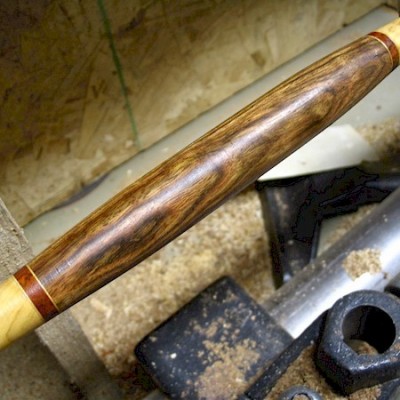
Poorly named woods for the North American market
- Pinus contorta being sold as beetle kill pine. While technically an accurate name for the special blue-stained wood infested by the mountain pine beetle, it’s generally repulsive sounding. I have a feeling it was just a temporary name created by some lumberjacks,
- Acer species begin sold as wormy maple. This is one instance where I think the trade name ambrosia maple is actually a clever move. It takes something that most people would find repulsive (previously insect-infested wood) and reframes it as something delightful.
- Vouacapoua americana being sold as brownheart. Never use the word brown to describe wood. There are virtually no positive connotations to the color name, and it is not that helpful. And when it’s paired with the word “heart” (reminiscent, no doubt, of purpleheart), it’s almost like calling it “essence of brown.”
- Hevea brasiliensis being sold as rubberwood. While it’s technically true that the tree is the commercial source of latex for making rubber—nearly everyone will, at first glance, think the wood itself is made of rubber. It’s no surprise that this wood is very often sold as imported finished furniture where the wood type doesn’t need to be specified.
- Using geographical names to describe wood. On the surface, this may seem to be a straightforward and honest way to name wood. Certainly, it’s a very common way to differentiate between species in a commercial setting. (Nearly every species of rosewood and ebony follows this pattern.) But when this is done, it will forever link the wood to the political stability (or lack thereof) of the source country. If civil war, controversy, or any other upheaval comes to pass, the hardwood “brand recognition” will go down the drain along with the public’s opinion of that country.
It’s not my intention to turn this article into anything political, but merely to point out possible connotations (whether justified or not) that exist in the general public. Different country names might make us think of drug cartels, spies, communism, corruption, terrorism, or any number of other negative imagery. There is a good reason that certain wood products don’t bear names such as Mexican or Venezuelan rosewood, Russian or Chinese plywood, etc. While such products surely do exist, they are not marketed as such. One good example in recent times is the marketing of Dalbergia tucurensis as Yucatan rosewood—which, being a true rosewood species, is a name I don’t take any issue with.
Bonus points to Manilkara bidentata, a wood whose common names breaks both of the guidelines described above. It’s sometimes known as Massaranduba (however you pronounce that name, it’s intimidating just to look at). And it’s more commercially-oriented name of bulletwood. I get it, they are wanting you to know that this wood is really tough (which it is!), maybe that it’s bulletproof or some other such notion. But the connotations and connections aren’t the best.
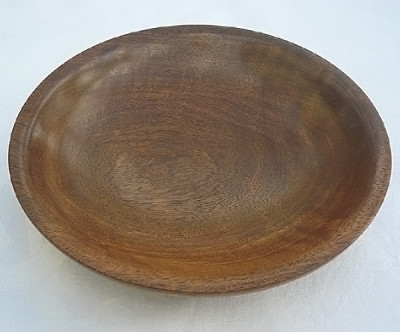
A tree is just a tree, it didn’t do anything right or wrong. But it requires thought and careful planning to come up with a common name that is honest, helpful, and appealing all at the same time.
The Halo Effect
In the world of wood, the halo effect takes the form of certain well-known wood names (and geographical locations) that evoke positive thoughts or perceptions. Let’s say you are a wood importer, working with sawyers and sawmills from remote locations in Southeast Asia or the Amazon Basin. They’ve got a great new wood for you to try. “What’s it called?” you ask. Their response is an unintelligible word that means nothing to you, sounds awful, and can’t even be spelled correctly, much less pronounced. You are never going to be able to sell this wood as it is. No one has heard of it, no one knows a thing about it, and even if it were as great as they say it is, no one would bother to try using it. Enter the halo effect.Let’s reimagine a conversation with a sawmill, this time with the halo effect in full swing.
And so, somehow, we’ve ended up with a wood that is neither (exclusively) Brazilian, nor walnut. How could this happen? Because of the halo effect. Two familiar (and generally positive) terms were borrowed and spliced together to make this abomination of a common name. And while the above conversation is meant to be satirical, I’d be willing to bet that it’s not far from the mark of how the name truly came about.
Halo effects (listed from least to most egregious)
A) Unknown woods that are trying to sound better based on location. Generally acceptable, though if a species is scattered throughout different regions, it’s a little suspect to pick and choose an overly-specific name solely because it sounds nice. See my mock-conversation on Brazilian walnut above.
B) Unknown woods that are trying to sound better based on another known, related wood. The keyword here is related. If we have walnut in North America, and there’s another related species of true walnut in South America, I see no issue whatsoever in reusing the name and applying a different geographical specifier to the wood, so long as it is honest. Examples would be tropical walnut (or perhaps the overly-specific Peruvian walnut moniker), or Argentine osage orange.
C) Known woods that are trying to sound less cheap. This is almost the halo effect in reverse—pushing language back out towards obscurity to avoid well-known names that specifically have a less-than-stellar connotation. Recent examples include drums of yellow poplar (a rather inexpensive species) being called by the more generic name of tulip (a much less common name), or balsa drums being sold under the more obscure-sounding name “Ochroma”—which is actually the Latin name of the genus that yields balsa wood. Both names are technically not incorrect, but are at the very least a bit shady.
D) Unknown woods that are trying to sound better based on another known, unrelated wood. As in point B, the keyword here is unrelated. If the above naming techniques were treading into gray areas, this last element has the darkest cloud of doubt hovering over it. If trees could walk and talk (and get trademarks for their “brand” of wood) I think they would be trundling into courtrooms all over the world from some of the more recent commercial wood names.
The issue is that people have notions and expectations attached to what a certain wood is and should be, and that name goes much deeper than superficial appearance. A good example would be “mahogany”—it has a very positive connotation, and for good reason. The wood is a beautiful golden brown. But it also has excellent workability characteristics and superb dimensional stability, among other things. So if a wood has a superficial resemblance to stained mahogany, such as Myroxylon balsamum (commonly called Santos mahogany), but it is not related to true mahogany, and it lacks a number of other benefits (such as easy workability and finishing), the name is a misnomer on multiple accounts.
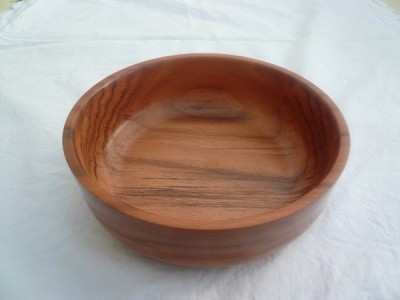
The worst offenders are those that mix shady parts of the aforementioned A with D—that is, they take an unknown wood, cherry-pick a nice sounding (and perhaps inaccurate) geographical name, and then artificially pump up its credibility by linking it to a totally unrelated wood that has a known and trusted track record.
The most commonly abused halo names
Mahogany: This has been one of the most abused names in woodworking over the past few decades. Not all “mahogany” is created equal, and people think they are getting one thing only to find later that they have been sold something that was wholly unexpected. It’s such a problem, I even wrote an entire article addressing this specific issue, Mahogany Mixups.
Teak: While not as widespread as the mahogany problem, there have been a handful of woods bearing the teak namesake. Botanically, there’s really only one teak, Tectona grandis. Compounding the problem is the fact that there are plantations of real teak (along with assertions that wild-grown teak is superior), as well as differing amounts of sapwood/heartwood, leading to different levels and grades, even within the true Tectona species. The one redeeming grace is that those that truly need all of teak’s full benefits (such as boatbuilders) are much more likely to be in-the-know and much less susceptible to the various marketing names employed.
Rosewood: Certainly a very widely abused name, with the term being applied to many unrelated species from nearly every continent—to the point that the name could almost be translated from marketers’ jargon to mean “we think this wood looks really pretty.” However, true rosewoods are limited to the Dalbergia genus. While the name has been widely abused and misapplied, one countervailing truth is simply the fact that most rosewood (excepting guitars) is used and admired primarily for its appearance. So if a consumer thinks they are getting genuine rosewood, and it turns out they didn’t—but they like the appearance of the wood—they still got cheated, but perhaps not to the extent of other halo names on this list where actual performance and suitability is at stake.
Common or familiar North American hardwoods such as oak, cherry, or walnut: These names are chosen for their familiarity, and are almost always applied to a completely unrelated wood from a distant geographical location.
Brazilian [ . . . fill-in-the-blank . . . ] Combine this with the above North American names and you have a marketing duo gone wrong. Brazilian teak, Brazilian walnut, Brazilian cherry, Brazilian redwood, Brazilian ash, the list goes on and on. You know the pattern, it must contain the country name of Brazil (even if the tree is not exclusively harvested from that country), and it must contain the name of a known, yet botanically unrelated species.
SIDENOTE: Brazil holds the distinction, as far as I am aware, as being the only country in the world that actually has derived its name from the wood that was harvested there. If there’s any wood that holds the right to be called by the country’s name, you’d better believe it’s brazilwood.
Bamboo: Not really abused as much as it is simply misunderstood. Many people hear “bamboo” and they immediately think of a sustainable and eco-friendly alternative to solid wood—after all, the stuff grows like weeds, and is very strong. Trees are “bad” and bamboo is “good.” The problem comes when you consider the raw volume of useable material in a bamboo culm to that of a tree trunk. Even the so-called “giant bamboo” is (1) much smaller, (2) hollow, and (3) with a hard outer “shell” that usually needs to be removed before processing. Most bamboo products made today are much closer to plywood (and with much more expensive and labor-intensive processing requirements). Remember, if bamboo can be intentionally grown and harvested sustainably, many tree species can do the same—and the trees will produce a much greater quantity of usable material in the same space.
Acacia: This is the halo effect at its finest. It sounds nice, like something you’d name your daughter. The problem is that it takes advantage of people’s preconceptions. The wood that’s for sale (I would hope) really does come from the Acacia genus. But there’s nearly 1,000 vastly different species in the Acacia genus. Those selling “acacia” wood, particularly mass-produced furniture, seem to thrive on ignorance. Do you think that a genus as large and diverse as Acacia, with wood as lightweight as Acacia mangium up to woods that will literally sink in water, can be summarized in a single positive sentiment about their suitability for furniture?
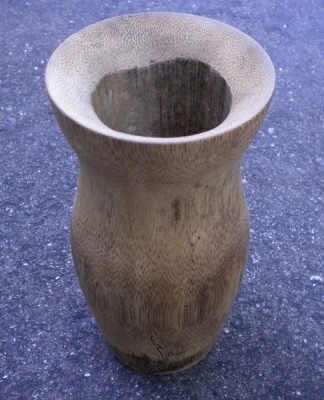
Halo names I’m (mostly) okay with
Ebony: This name could really be listed above in the problematic section, but the reason I don’t have as strong an objection is simply that ebony is meant to denote a wood that’s dense and almost perfectly black. In the world of trees, this named has to be earned—you either have what it takes, or you don’t. It’s true that “genuine” ebony comes from the Diospyros genus—but as Bob Taylor so helpfully pointed out, only one in ten real ebony trees yield wood dark enough to be traditionally called ebony. Yet the very word ebony is of Egyptian derivation, and the original species used thousands of years ago has been found to primarily be African blackwood (Dalbergia melanoxylon). While the world of ebony wood can be confusing (even within the true ebony genus there are shades of gray), it’s generally best to trust your eyes. It’s either black enough for your needs, or it isn’t. One shouldn’t hope that a wood will darken or become more black over time.
Cedar: Of nearly all of the halo wood names, perhaps the most ambiguous and open is that of cedar. The most restrictive definition is to limit cedar only to those trees in the Cedrus genus (none of which are found in North America). But there are a great number of other tree species that are more or less universally accepted as being just as genuine and worthy of the cedar name as Cedrus species. Generally, if a wood is aromatic and lightweight (and to a lesser extent, rot resistant), it wouldn’t be considered completely out of hand to refer to it as cedar.
Bolivian rosewood: This comes as an apparent contradiction to my rosewood listing above. While it’s technically correct that true rosewoods are from the Dalbergia genus, one should also give consideration to the Machaerium genus, whose species are sometimes sold under the trade name Bolivian rosewood or santos rosewood. While the precise botanical hierarchy between the two genera has been juggled around since 1981, one thing has remained constant: the notion that Machaerium is very closely related to Dalbergia. Additionally, the wood itself has a very similar appearance, a unique odor, and the very same allergenic compounds (called dalbergiones) that are unique to rosewoods.
Australian woods: It’s true that many Australian trees have been given common names that are based off of more familiar trees from the Old World. Prominent examples include various species of ash, beech, maple, myrtle, oak, and pine—all of which bear little botanical relation to their European or North American counterparts. But though this naming scheme can be somewhat confusing for outsiders, the situation is ameliorated by a few factors. First, very few of these species are actually exported, so there are relatively few mixups (exceptions might include Queensland maple and myrtle beech. Secondly, their motivation wasn’t to put a certain spin on a wood species in order to sell it—they just honest-to-goodness needed to come up with a useful name for the wood.
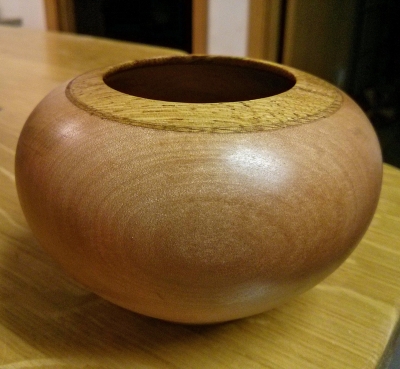
Trees can’t file for trademark protection
It may seem obvious, but trees (as well as trade organizations), can’t get copyright protection. Certain hybrids (such as lyptus), as well as wood that’s been processed in a proprietary means (such as accoya or dymondwood) appear to have trademark protection. But in all these examples, no single, naturally-occurring wood species is being protected or claimed with exclusive rights.
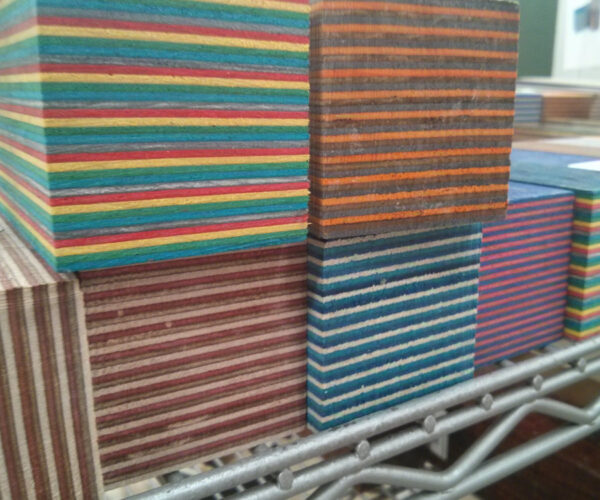
Having a negative experience with a “knockoff”
Imagine you represent a collection of sawmills or wholesalers that work in one or two specific woods. It could anything from teak in Asia, mahogany in Central America, or cherry in the Northeastern United States. Now imagine a new importer comes along and offers a wood with a confusingly similar name, but at a reduced cost. The general public begins buying and using this wood, and they are not getting what they expected. The “teak” isn’t weathering as nicely in the hot sun and wet rain, and develops checks. The new “mahogany” just doesn’t look right. And even the “cherry” is much heavier and more difficult to work with.
You can see how these very real situations could play out. People think they are getting one thing, and they get something else entirely. Confidence and overall perception in the original article become eroded, all at the expense of boosting the credibility of the interloper trying to gain mass market appeal.
The biggest hang-up to this name game is that of unfulfilled expectations. It’s one thing to sell ipe as Brazilian walnut to a naive homeowner to make a sale—I very much doubt they would be disappointed in the performance of the wood for that purpose.
But what if a cabinet-maker, thinking it could be a nice new walnut, tries to use the wood as a new cabinet material? For this application, the Brazilian “walnut” is nothing like black walnut, and it would be a nightmare to machine into rails and stiles and make raised panels. And the glue might even fail catastrophically (ipe does best with mechanical fasteners), or the finish might not cure properly (it contains antioxidants that inhibit some finishes from hardening). So now two great woods, each with their own unique purposes, are having their reputations dragged through the mud in the name of expediency.
Wood and cheese: An interesting side-note that may be worth further investigation is the status of parmesan cheese within the EU. Both the name parmesan, as well as the more specific Parmigiano-Reggiano name are protected, and cannot be used without meeting stringent criteria regarding geographic origin and specific methods and materials. (Outside of the EU, the name parmesan is more generic and on par with something like “cheddar” and can be much more amorphous in its form.) Imagine the implications if something like this were implemented for rosewood or mahogany. I actually think such a step would be very helpful in many ways, but I can also see many gray areas and complicating questions that might also arise.
Choosing a good name
As many wood species on the international market are unsustainably harvested and slowly becoming more and more endangered, I believe that lesser-known and more obscure species will become increasingly important in the coming years. For many imported wood species, it feels like these objections to naming practices are coming in very late to the party, but I believe there are still many more useful and beautiful woods that are yet to be named in North America.
If nothing else, I hope that the entirely of this website plays a small role in lifting others out of the ignorance of one of earth’s most fascinating natural resources. I hope more and more people can speak up, and say to hardwood flooring dealers, decking salespeople, guitar manufacturers, etc.—“actually, that wood is not at all related to true [rosewood, teak, walnut, mahogany, etc.] and the name is misleading. Have you considered just using the original name of _____ for this wood?”
Some guidelines to marketing woods in way that is honest, helpful, and appealing
1. Review the common names for the wood in various languages and regions. Do any of them sound good?
Many trees have a host of different common names because they grow in a number of different countries with different ethnicities and languages. I do not think it is disingenuous to cherry pick the best-sounding regional name, so long as it is (1) honestly a true name given to the wood, and (2) is not so generic or commonly used that it creates confusion because many other wood species use it (examples of this would be granadillo and pau ferro).
In the country of Cameroon, the wood of bubinga is called essingang. In Congo, it’s called waka. Is it any surprise that they chose to market it as bubinga? (If there’s any doubt in your mind as to the answer to that question, please consult a focus group or someone else to help you look for a good wood name.)
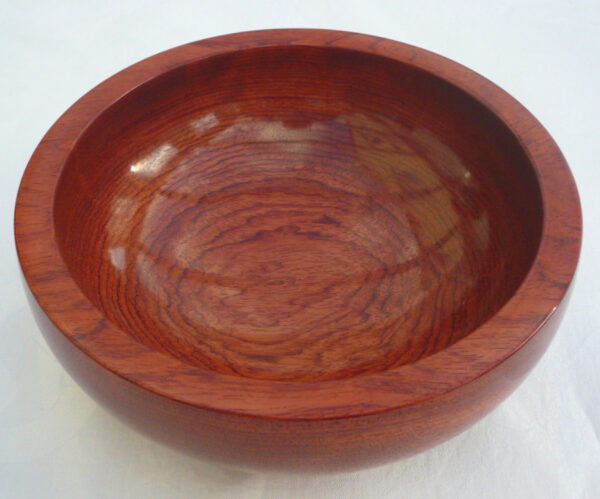
2. Is the wood botanically related to another known wood?
If it is, and it has similar working properties, it may be helpful to compare the two. Just how closely two woods are related can be a tricky question based on context. Certainly, woods in the same genus would, in most instances, be considered closely related. Exceptions come in very large genera where hundreds of species with divergent characteristics are present. Case in point: the Acacia genus (mentioned above), containing some 1,000 or so species ranging from lightweight woods all the way up to the heaviest of all known woods). Contrariwise, in smaller genera, it can be helpful to go further up the hierarchy and compare to other genera in the same family, as I note in my article about mahogany. I believe this is also a valid comparison for something like lacewood in the Protecaceae family as well. But there are limits.
I once recall a sales page for an imported hardwood that stated that the wood was “in the same family as rosewood.” Fabaceae? (Sometimes called Legumaceae.) I guess that means there’s about 20,000 other species that are also “in the same family” as rosewood too. Any more generic, and you’d basically be saying, “it’s a tree—just like rosewood!”
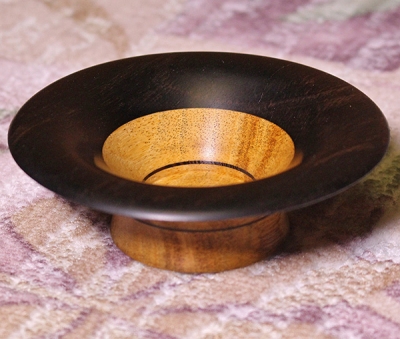
But some real world examples of this guideline would be calling Maclura tinctoria by the name Argentine osage orange, as it is a true relative of the common osage orange found in North America, and the alternate common name “fustic” doesn’t slide off the tongue that well. Also, I see tropical walnut as a legitimate and helpful name that describes a tree that really is a relative of walnut, and generally works better than the regional common name, nogal. While it’s a bit ridiculous, I would even go so far as to condone someone calling persimmon (Diospyros virginiana) by the name white ebony, since the tree is botanically related to true ebonies in the Diospyros genus, and has similar properties. (And I don’t think with a name like white ebony that anyone would have any undue expectations about what they were getting).
3. Can you come up with an honest, helpful, two-word name that doesn’t cause confusion or take advantage of pre-existing halos?
I say a two-word name because I think it’s very important to include a qualifier out in front. The most common qualifier for imported woods is its geographic source. (Think Honduran mahogany, Brazilian rosewood, or English oak.) Another good qualifier can be a color. (Think yellow cedar, white oak, black walnut, etc.) Qualifiers like this help to clear up confusion and give needed specificity.
When I first created this website, I didn’t always include qualifiers in the common names of my wood profile pages. I never dreamt that the website would grow as large as it has, and so I have had to “globalize” some of my pages. I began with a page simply titled “poplar”—and in the United States, the term poplar more or less unambiguously always refers to one species, Liriodendron tulipifera. But not in Europe, or the rest of the world, for that matter. As a matter of fact, what we Americans call “poplar” isn’t really true poplar in the Populus genus at all. So, I thought it helpful to go back and make a simple revision to the page title, and call it “yellow poplar” instead. Simply adding another word as a qualifier to the front helps avoid confusion, and makes it clearer what species is being referred to.
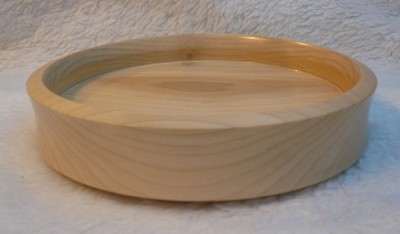
4. Can you tell a story about the wood?
Just about every wood is good at something. There’s probably some positive attribute you can emphasize. When a “newcomer” species is named after an already-existing wood, it receives an immediate boost in credibility for the short term, but it actually serves to sabotage its desirability. It’s seen as only a substitute. As a runner-up. As a good-enough, second-class alternative. People hate that. They want the best. They want something unique. Something with personality. As a wood importer or retailer, what you need to do is present positive attributes in the areas where the wood is the “best” at something, not present it as something that’s second-best.
I remember back when George W. Bush was governor of Texas, he was referred to as “George Bush Jr.” That was people’s point of reference—the son of his former-president father. But when he ran for and became president himself, there was no “junior” in his name anymore. That’s something akin to what it’s like with wood names. We’re just not interested in buying a bunch of “juniors” in the world of wood.
Here’s a hypothetical real-world example with sapele (which, I admit, is a tough name to pronounce, but like ipe, it is getting a lot more traction as time goes by). Even the innocuous habit of naming it “sapele mahogany” can be counter-productive. Immediately from the outset, the wood is forced to live overshadowed by its “junior” name.
Sapele as a “junior mahogany”
CUSTOMER: What’s this sapele mahogany? Is that like the mahogany that everybody is using?
IMPORTER: Well, it’s not actually the same mahogany, but there’s a lot to like about the wood.
CUSTOMER: Okay, so it’s like an alternate version of mahogany?
IMPORTER: Yes, but let me tell you all the benefits of this wood.
CUSTOMER: No thanks, do you have the real mahogany for sale?
Sapele as a unique species
CUSTOMER: What’s this sapele, I’ve never heard of it before?
IMPORTER: This stuff is really something special, you need to see how beautiful the wood is.
CUSTOMER: What’s so special about it?
IMPORTER: In a lot of ways, it’s like mahogany, only better. It’s got a darker, richer color that doesn’t need to be stained. It’s harder and stronger. It even has a really interesting smell to it that’s sort of like cedar.
CUSTOMER: Wow, that sounds like a truly special wood! I’ll have to check it out.
Of course, no wood is universally “better” than another, but you have to consider the application. Find something good or positive about the wood for a specific application, and emphasize that as “better.” If you are going to stain genuine mahogany a deeper reddish brown, then sapele’s coloration is “better” for you in that specific application, etc.
Get the hard copy
 If you’re interested in getting all that makes The Wood Database unique distilled into a single, real-world resource, there’s the book that’s based on the website—the Amazon.com best-seller, WOOD! Identifying and Using Hundreds of Woods Worldwide. It contains many of the most popular articles found on this website, as well as hundreds of wood profiles—laid out with the same clarity and convenience of the website—packaged in a shop-friendly hardcover book.
If you’re interested in getting all that makes The Wood Database unique distilled into a single, real-world resource, there’s the book that’s based on the website—the Amazon.com best-seller, WOOD! Identifying and Using Hundreds of Woods Worldwide. It contains many of the most popular articles found on this website, as well as hundreds of wood profiles—laid out with the same clarity and convenience of the website—packaged in a shop-friendly hardcover book. 
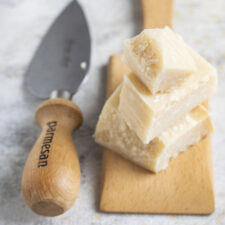 Wood and cheese: An interesting side-note that may be worth further investigation is the status of parmesan cheese within the EU. Both the name parmesan, as well as the more specific Parmigiano-Reggiano name are protected, and cannot be used without meeting stringent criteria regarding geographic origin and specific methods and materials. (Outside of the EU, the name parmesan is more generic and on par with something like “cheddar” and can be much more amorphous in its form.) Imagine the implications if something like this were implemented for rosewood or mahogany. I actually think such a step would be very helpful in many ways, but I can also see many gray areas and complicating questions that might also arise.
Wood and cheese: An interesting side-note that may be worth further investigation is the status of parmesan cheese within the EU. Both the name parmesan, as well as the more specific Parmigiano-Reggiano name are protected, and cannot be used without meeting stringent criteria regarding geographic origin and specific methods and materials. (Outside of the EU, the name parmesan is more generic and on par with something like “cheddar” and can be much more amorphous in its form.) Imagine the implications if something like this were implemented for rosewood or mahogany. I actually think such a step would be very helpful in many ways, but I can also see many gray areas and complicating questions that might also arise.


This is a doctoral level thesis, it occurred to me part way through that you’re probably the nations leading expert on wood in all it’s many and wonderful forms.
This is the best wood article I’ve ever read and I’ve read a lot of them. I found multiple examples where I’ve been fooled but also several woods that are new to me and look like they’d be fun to try out.
Very informative! I had wondered why there were so many mahoganies and rosewoods available. Armed with more information, I can make better choices and get a better end product. Thank you.